|
 Secure Site
Secure Site
|
 |
Archive for the 'Well-being' Category
 sleep tips Tools for Better Sleep
Guests at the Ritz-Carlton, Kapalua can experience a new program called “Sleep Fit”. Developed by Claudia Micco, mind-body-fitness director, its aim is to provide guests with a better understanding of themselves. “We’re offering them the tools,” says Micco. “If they want to continue the work at home, they’ll have the tools. They can look at what personal obstacles they need to overcome to improve the quality of sleep and therefore improve the quality of life.” Here, Micco shares her top sleep tips.
1. Develop sleep rituals. This releases the build-up of daily tension and builds a positive attitude as you prepare for sleep. Simple practices such as showering, bathing, stretching, journaling, relaxation, and yoga breathing can help your body prepare for a good night’s sleep.
2. Take time to wind down gradually. Dimming the lights or turning the TV or computer off one or two hours before going to bed can help.
3. Once you are in bed, welcome and surrender to sleep.
4. Explore any resistance to sleep. Give yourself permission to notice your thoughts without attaching a story to them.
5. Count your breaths. Inhale and exhale 1, inhale and exhale 2, and so on. If you lose count, begin again at 1.
6. If all else fails and you really can’t sleep, get out of bed for a while, but keep the room dimly lit and try some light reading. Stay away from the TV and computer!
7. Develop waking rituals. Practice waking up with a relaxed attitude. Wake up gradually and take a few moments to notice your surroundings. Use your Zen Alarm Clock to wake you gradually and progressively with calming chimes.
8. Notice your in breath and your out breath as you wake up. Visualize a great day ahead!
9. Get rid of the annoying alarm clock; it will disrupt your whole day! Look for a Zen Alarm Clock, or wake up to soft music.
10. Stick to healthy eating, moderate aerobic exercise, and drop the caffeine and alcohol for good night zzzz’s.
adapted from Organic Spa Magazine, by Mary Bemis
Boulder, Colorado—an innovative company has taken one of life’s most unpleasant experiences (being startled awake by your alarm clock early Monday morning), and transformed it into something to actually look forward to. “The Zen Alarm Clock,” uses soothing acoustic chimes that awaken users gently and gradually, making waking up a real pleasure. Rather than an artificial recorded sound played through a speaker, the Zen Clock features an alloy chime bar similar to a wind chime. When the clock’s alarm is triggered, its chime produces a long-resonating, beautiful acoustic tone reminiscent of a temple gong. Then, as the ring tone gradually fades away, the clock remains silent until it automatically strikes again three minutes later. The frequency of the chime strikes gradually increase over ten-minutes, eventually striking every five seconds, so they are guaranteed to wake up even the heaviest sleeper. This gentle, ten-minute “progressive awakening” leaves users feeling less groggy, and even helps with dream recall.
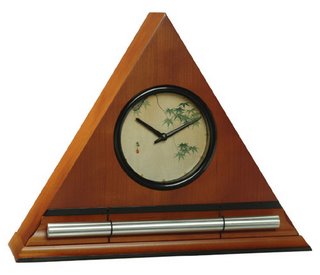 Honey Japanese Maple Leaves Zen Alarm Clock, chime alarm clocks and natural sounding timers
Now & Zen’s Acoustic Alarm Clock Store
1638 Pearl Street
Boulder, CO 80302
(800) 779-6383
Posted in Chime Alarm Clocks, Natural Awakening, sleep, Sleep Habits, wake up alarm clock, Well-being
 finding balance Myth: Imbalance will result in disaster.
Truth: Imbalance is opportunity.
Maybe you sense that your balance is slipping. Put those moments in perspective. We have to occasionally lose our balance in order to regain it. The mistake we often make is accepting our imbalances as part of who we are — giving up instead of trying to recover balance.
You may not want to believe you’ve taken on too much, for instance, because you want to do it all and are hesitant to let anything go — whether it’s a job, obligation, or opportunity. Consider what kinds of imbalances have been affecting you, physically, mentally, emotionally, or spiritually; pay attention to when and how you experience it.
When one area of your life is imbalanced, it can affect the others. Rather than view your imbalance as a mistake to fix, see it for what it is: an opportunity to rediscover balance in a new way.
Use our unique “Zen Clock” which functions as a Yoga Timer. It features a long-resonating acoustic chime that brings your meditation or yoga session to a gradual close, preserving the environment of stillness while also acting as an effective time signal. Our Yoga Timer & Clock can be programmed to chime at the end of the meditation or yoga session or periodically throughout the session as a kind of sonic yantra. The beauty and functionality of the Zen Clock/Timer makes it a meditation tool that can actually help you “make time” for meditation in your life. Bring yourself back to balance.
adapted from Body + Soul
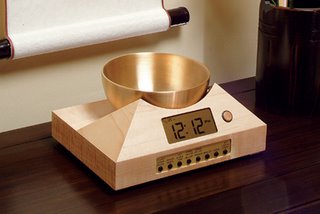 Singing Bowl Meditation Timers and Clocks Now & Zen’s Singing Bowl Meditation Timer Store
1638 Pearl Street
Boulder, CO 80302
(800) 779-6383
Posted in Meditation Timers, Meditation Tools, mindfulness practice, Well-being
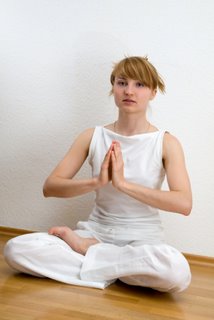 yoga Sooner or later, most of us feel a little depressed or anxious, and certainly all of us know what it’s like to feel tired. There are many different ways of treating these feelings, from exercise to meditation, from medication to a long vacation in Hawaii. But you may not realize that you have a safe, effective, and inexpensive remedy right at hand for each of these conditions. What is this magical elixir? Your own breath.
As yogis have known for centuries—and as medical science is beginning to discover—the breath has amazing recuperative powers. By controlling the breath (a practice called pranayama), the yogis found, they could alter their state of mind. The three pranayama practices described here primarily create their effects by slowing and regularizing the breath. This engages what scientists call the parasympathetic nervous system, a complex biological mechanism that calms and soothes us.
How does slower breathing help? In stressful times, we typically breathe too rapidly. This leads to a buildup of oxygen in the bloodstream and a corresponding decrease in the relative amount of carbon dioxide, which in turn upsets the ideal acid-alkaline balance—the pH level—of the blood. This condition, known as respiratory alkalosis, can result in muscle twitching, nausea, irritability, lightheadedness, confusion, and anxiety.
In contrast, slowing the breath raises the carbon dioxide level in the blood, which nudges the pH level back to a less alkaline state. As the blood’s pH changes, the parasympathetic nervous system calms us in a variety of ways, including telling the vagus nerve to secrete acetylcholine, a substance that lowers the heart rate.
Know Your Breath
Now please note that I’m not recommending that you try to breathe away chronic anxiety, fatigue, or depression. None of these conditions is easily or safely self-treated. In fact, tackling them by yourself, without professional supervision, could make them worse. But your breath can be a powerful ally in coping with temporary physical and emotional states—whether you’re despondent about an argument with a close friend, apprehensive about an upcoming job interview, or exhausted after a tough day at work.
 Use Your Chime Timer to Breathe Away Anxiety - Eisen Keisai, Woman Getting out of a Mosquito Net As with any treatment, the breathing remedy must be administered intelligently and judiciously to be fully effective. Each condition responds best to its own special breath. To calm anxiety, for example, you can purposely lengthen your exhalations; to alleviate dullness and fatigue, you can lengthen your inhalations. And to lift yourself out of an emotional pit, it’s most effective to equalize the lengths of your inhalations and exhalations.
If you want your breath to work as an extra-strength remedy, it’s a good idea to do some preliminary practice before you try to apply these techniques. First, spend some time with your breath when you’re feeling in the pink, learning to closely watch its movements and tendencies.
When you first try to look at your breath, the experience may feel akin to that of a fish attempting to describe water. Your breathing is so habitual that you’ve probably never given it much attention, and therefore you have little sense of the subtle and not-so-subtle ways it can change. But if you continue to watch, you will probably begin to notice many different dimensions, physical and emotional, to the feeling of your breath.
“The Zen Alarm Clock & Chime Timer’, uses soothing acoustic chimes that signal it’s time – gently and gradually.
Rather than an artificial recorded sound played through a speaker, the Zen Clock features an alloy chime bar similar to a wind chime. When the clock’s alarm is triggered, its chime produces a long-resonating, beautiful acoustic tone reminiscent of a temple gong.
adapted from Yoga Journal by Richard Rosen
 Bamboo Zen Meditation and Yoga Timer Now & Zen’s Chime Timer Store
1638 Pearl Street
Boulder, CO 80302
(800) 779-6383
Posted in Well-being, yoga, Yoga Timer, Yoga Timers by Now & Zen
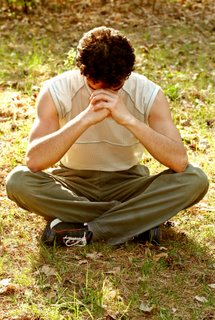 use your chime timer to practice breathing Fall is the season when the lungs, believed to harbor sadness and grief, are most vulnerable, according to Chinese medicine. In response to cold, dry weather, they begin to constrict. To keep yours healthy and strong as cold and flu season approaches, Ni suggests this breathing exercise: Sit with your spine tall and your hands on your abdomen. Draw in a deep breath for a count of 10, expanding your abdomen and then filling your lungs. Exhale in reverse for another 10 count, squeezing out all the air you can. Set your Chime Timer by Now & Zen for 15 minutes and continue until the calming chime strikes.
adapted from Wholeliving.com, October 2010
The Zen Alarm Clock is a consciousness-raising tool. No material object can actually raise your consciousness, but you can use information and devices such as this clock to stimulate your growth. The Zen Alarm Clock can effect your awareness in a variety of positive ways, all of which require your participation.
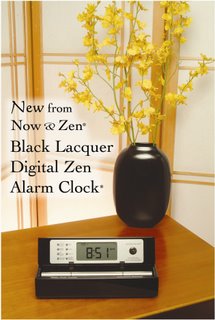 Chime Timers, time your wellness practice with a calming chimes
Now & Zen – The Zen Chime Timer Store
1638 Pearl Street
Boulder, CO 80302
Posted in intention, Meditation Timers, Meditation Tools, mindfulness practice, Well-being
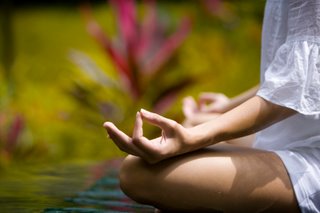 meditation Stress is the immune system’s worst enemy. Whether you’re dealing with a brief bout of craziness like Christmas shopping, or a longer-lasting stressor like divorce, your body’s ability to fight germs is compromised by physical and mental tension. Meditation can help. One study found that people who attended an eight-week mindfulness meditation class (a three-hour class once a week, plus daily meditation for an hour) ended up with stronger immune systems than those people who didn’t meditate. Researchers believe that the meditation-induced relaxation boosted the group’s immunity. Over time, high levels of stress hormones dampen the immune system, says Timothy McCall, MD, Yoga Journal’s medical editor and author of Yoga as Medicine. “So it makes sense that by practicing mindfulness-based stress reduction, your immune system benefits.” Research shows that even 10 minutes of daily meditation reduces the physical symptoms of stress. (To learn meditation techniques, go to yogajournal.com, click on “Practice,” and then choose “Meditation.”)
“The Zen Alarm Clock & Chime Timer’, uses soothing acoustic chimes that signal it’s time – gently and gradually.
Rather than an artificial recorded sound played through a speaker, the Zen Clock features an alloy chime bar similar to a wind chime. When the clock’s alarm is triggered, its chime produces a long-resonating, beautiful acoustic tone reminiscent of a temple gong.
adapted from Yoga Journal by Catherine Guthrie
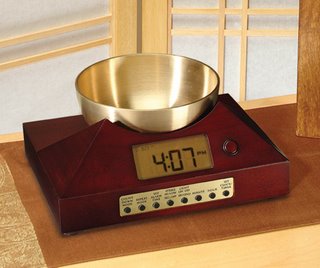 Zen Timepiece with Brass Singing Bowl, a Meditation timer to Calm your Mind Now & Zen – Zen Chime Meditation Timers and Clocks
1638 Pearl Street
Boulder, CO 80302
(800) 779-6383
Posted in Well-being, yoga, Yoga Timer, Yoga Timers by Now & Zen, zen
 Brain Aid -- Meditation and Yoga
Science has proven that meditating actually restructures your brain and can train it to concentrate, feel greater compassion, cope with stress, and more.Read the latest research and put it into practice.Yoga citta vritti nirodhah. Yoga is the ending of disturbances of the mind. (Yoga Sutra, I.2)
Nothing is quite as satisfying as a yoga practice that’s filled with movement. Whether you prefer an intense and sweaty vinyasa practice, a gentle but deliberate Viniyoga practice, or something in between, all systems of hatha yoga provide a contented afterglow for the same reason: You sync your movement with your breath. When you do, your mind stops its obsessive churning and begins to slow down. Your attention turns from your endless to-do list toward the rhythm of your breath, and you feel more peaceful than you did before you began your practice.
For many of us, accessing that same settled, contented state is more difficult to do in meditation. It’s not easy to watch the mind reveal its worries, its self-criticism, or its old memories. Meditation requires patience and—even more challenging for most Westerners—time. So, why would you put yourself through the struggle?
Quite simply, meditation can profoundly alter your experience of life. Thousands of years ago the sage Patanjali, who compiled the Yoga Sutra, and the Buddha both promised that meditation could eliminate the suffering caused by an untamed mind. They taught their students to cultivate focused attention, compassion, and joy. And they believed that it was possible to change one’s mental powers and emotional patterns by regularly experiencing meditative states. Those are hefty promises.
But these days, you don’t have to take their word for it. Western scien-tists are testing the wisdom of the masters, using new technology that allows researchers to study how meditation in-fluences the brain.
 Meditating to the rescue
The current findings are exciting enough to encourage even the most resistant yogis to sit down on the cushion: They suggest that meditation—even in small doses—can profoundly influence your experience of the world by remodeling the physical structure of your brain.
Although meditation can be done in almost any context, practitioners usually employ a quiet, tranquil space, a meditation cushion or bench, and some kind of timing device to time the meditation session. Ideally, the more these accoutrements can be integrated the better. Thus, it is conducive to a satisfying meditation practice to have a timer or clock that is tranquil and beautiful. Using a kitchen timer or beeper watch is less than ideal. And it was with these considerations in mind that we designed our digital Zen Alarm Clock and practice timer. This unique “Zen Clock” features a long-resonating acoustic chime that brings the meditation session to a gradual close, preserving the environment of stillness while also acting as an effective time signal.
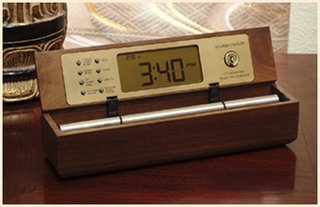 Digital Zen Alarm Clock - A Meditation Timer and Alarm Clock adapted from Yoga Journal, by Kelly McGonigal
Now & Zen’s Meditation Timer Store
1638 Pearl Street
Boulder, CO 80302
(800) 779-6383
Posted in Chime Alarm Clocks, intention, Meditation Timers, Meditation Tools, Well-being, zen, Zen Timers
 how to teach yoga to kids If you’re planning to teach yoga to kids, there are a few general things to know that will enhance your experience. The greatest challenge with children is to hold their attention long enough to teach them the benefits of yoga: stillness, balance, flexibility, focus, peace, grace, connection, health, and well-being. Luckily, most children love to talk, and they love to move—both of which can happen in yoga. Children will jump at the chance to assume the role of animals, trees, flowers, warriors. Your role is to step back and allow them to bark in the dog pose, hiss in the cobra, and meow in cat stretch. They can also recite the ABCs or 123s as they are holding poses. Sound is a great release for children and adds an auditory dimension to the physical experience of yoga.
Children need to discover the world on their own. Telling them to think harder, do it better, or be a certain way because it’s good for them is not the optimal way. Instead, provide a loving, responsive, creative environment for them to uncover their own truths. As they perform the various animal and nature asanas, engage their minds to deepen their awareness. When they’re snakes (Bhujangasana), invite them to really imagine that they’re just a long spine with no arms and legs. Could you still run or climb a tree? In Tree Pose (Vrksasana), ask them to imagine being a giant oak, with roots growing out of the bottoms of their feet. Could you stay in the same position for 100 years? If you were to be chopped down, would that be OK? Would it hurt?
When they stretch like a dog, balance like a flamingo, breathe like a bunny, or stand strong and tall like a tree, they are making a connection between the macrocosm of their environment and the microcosm of their bodies. The importance of reverence for all life and the principle of interdependence becomes apparent. Children begin to understand that we are all made of the same “stuff.” We’re just in different forms.
Think of yourself as a facilitator—the term we use in the YogaKids program—rather than a teacher. Guide your children while simultaneously opening your heart and letting them guide you. They’ll no doubt invite you into a boundless world of wonder and exploration. If you choose to join them, the teaching/learning process will be continually reciprocal and provide an opportunity for everyone to create, express themselves, and grow together.
Use our unique “Zen Clock” which functions as a Yoga Timer. It features a long-resonating acoustic chime that brings your meditation or yoga session to a gradual close, preserving the environment of stillness while also acting as an effective time signal. Our Yoga Timer & Clock can be programmed to chime at the end of the meditation or yoga session or periodically throughout the session as a kind of sonic yantra. The beauty and functionality of the Zen Clock/Timer makes it a meditation tool that can actually help you “make time” for meditation in your life. Bring yourself back to balance.
adapted from Yoga Journal by Marsha Wenig
 yoga timer - tools for teaching yoga to kids Now & Zen – The Yoga Clock & Timer Store
1638 Pearl Street
Boulder, CO 80302
(800) 779-6383
Posted in intention, mindfulness practice, Walking Meditation, Well-being, yoga, Yoga Timer, Yoga Timers by Now & Zen
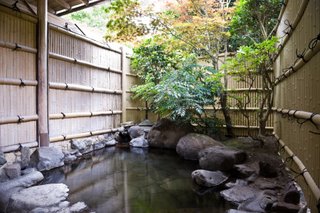 sacred soaking Water, a powerful and restorative element in exquisite rituals throughout the ages, finds itself front and center in most spiritual rites of passage. Many cultures consider water essential for both physical and spiritual cleansing, and millions continue to embark upon quests to holy rivers and healing springs, drawn to water equally for its soothing properties as well as its promise of purification.
Perhaps this draw to water feels so instinctual because our brains, blood, and even our muscles are composed mainly of water. When we submerge ourselves, we return, in essence, to a deep, primordial connection with the world around us. Through the simple act of bathing, we can celebrate this ancient relationship between water and life. With minimal effort, a daily bath becomes a meditative and mystical experience, helping us to connect with our own inner wisdom.
“Mankind has used water to restore the physical, mental, and emotional body since ancient times,” says Barbara Close, founder of Naturopathica Holistic Health and author of Pure Skin: Organic Beauty Basics (Chronicle Books, 2005). “From the beginning, the use of water as a conduit or healing agent has existed for both its physical and emotional healing properties.”
Long before holy wells began to draw pilgrims or the custom of “taking the waters” became popular at lavish bathing halls in Europe, ancient cultures in Asia, Indonesia, and Mesoamerica had their own elaborate bathing rituals, which often involved the use of steam and ceremonial sound. Both the Aztec Temazcal and Mayan Zumbul-che wove in musical elements to signify the start of the cleansing ritual. In parts of today’s world, including Indonesia, Southeast Asia, and island nations of the Pacific, cultures still associate wells, springs, and rivers with the Goddess, the feminine principle, and birth. Women add flower petals to ritual water as an extra flourish, imbuing their bath with the powerful spiritual energy associated with native plants. In the Javanese bath ritual that prepares brides for their wedding night, attendants first scrub and exfoliate the skin with turmeric and then rub it with yogurt to soften it. A luxurious bath with flowers and petals follows, and only then is the bride deemed purity incarnate.
 water “Each and every one of us, and every fragment of life on our planet, has an inner and outer relationship with water,” says Nadine Epstein, author (with Rosita Arvigo) of Spiritual Bathing: Healing Rituals and Traditions From Around the World (Celestial Arts, 2003). “The first living cells were formed in the salt bath of the sea, and I love imagining the blood that flows within us as a kind of internal sea. We are beings of water on a planet that is distinguished by its possession of water, the rushing waters that the early Jews called ‘living waters’ or mayyim hayyim.”
Ritual and renewal
You can connect with the healing energy of water by preparing your own spiritual bath at home. First order of business: Decide what you want to manifest in your life. The prospects run the gamut from the desire to release personal sadness or frustration to the hope of reducing global suffering. Next, establish the mood. The usual suspects, candles and incense, have traditionally been part of many prayer settings, but let your imagination run wild. Create an even richer ambiance by including specific music, scents, symbols, and images that resonate with your concept of the divine.
“Personally, I love singing and chanting on the surface of the water, watching the ripples of my breath, and soaking up the sounds in the air,” says Epstein. “I’ve always been fascinated by sound waves and how they travel through solids, gases, and liquids. As a little girl, I remember my father, a physicist, mapping the trajectory of sound waves through crystals. The symmetries of these waves were and are a beautiful thing to behold. It all boils down to connecting with what the Maya call ch’ulel, the Chinese call chi, the Hindus call prana. Nearly every culture has a name for the subtle energies or vibrations that exist within us and beyond.”
Ultimately, only the reverence with which we enter the water matters. If we are receptive enough, our immersions can gradually wring a sea change upon our spirit, teaching us that we can learn as much from floating as we can from standing on firm ground.
Although meditation can be done in almost any context, practitioners usually employ a quiet, tranquil space, a meditation cushion or bench, and some kind of timing device to time the meditation session. Ideally, the more these accoutrements can be integrated the better. Thus, it is conducive to a satisfying meditation practice to have a timer or clock that is tranquil and beautiful. Using a kitchen timer or beeper watch is less than ideal. And it was with these considerations in mind that we designed our digital Zen Alarm Clock and practice timer. This unique “Zen Clock” features a long-resonating acoustic chime that brings the meditation session to a gradual close, preserving the environment of stillness while also acting as an effective time signal.
 Portable Zen Timer with Chime by Now & Zen, Inc. adapted from Natural Solutions Magazine, March 2007 by Debra Bokur
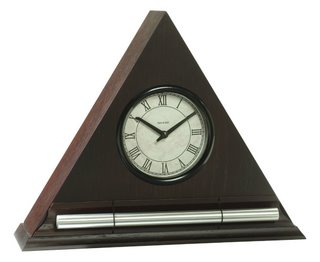 Natural Sound Alarm Clock with Chime Now & Zen’s Portable Meditation
Timer Store
1638 Pearl Street
Boulder, CO 80302
(800) 779-6383
Posted in Hot Springs, intention, Meditation Timers, Meditation Tools, mindfulness practice, Well-being
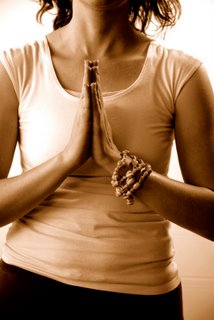 wellbeing The longer you sit at your desk, the more your posture resembles the curved, compressed arch of a camel’s hump — and the more uncomfortable you feel. Your back stands to suffer long-term misalignment as a result of slumping, while the resulting impaired breathing can lead to chronic muscle tension and drag your energy level down.
With its emphasis on core strength and alignment, Pilates counters these stresses by helping you look — and feel — a little taller. “This particular fitness discipline aims to create stability and freedom through the entire body by targeting the muscle groups that support the spine,” says New York City-based fitness and Pilates instructor James Darling. That includes the muscles deep within the back, abdomen, and pelvis. By focusing equally on strengthening and lengthening, the following Pilates favorites will foster a buoyant support system for your spine, bringing deeper breathing, more energy, and posture that’s both graceful and effortless.
Spine Stretch Forward
What It Does
Creates space between the vertebrae, lengthens the muscles of the back, and reduces lower back pain. Counteracts stress by calming the nervous system.
How to Do It
Sit on the floor with legs straight and spine tall. Drop your chin into your chest and contract your core, as if you’re trying to curl your torso up and over a beach ball. Focus on drawing your center in as opposed to curving your spine. Rest your hands where they fall, and breathe here for 30 seconds to a minute, use your Zen Timer to repeast the process with the “repeat mode”. Slowly roll back up to the starting position. Repeat six times.
adapted from Body + Soul, October 2008
Use our unique “Zen Clock” which functions as a Yoga Timer. It features a long-resonating acoustic chime that brings your meditation or yoga session to a gradual close, preserving the environment of stillness while also acting as an effective time signal. Our Yoga Timer & Clock can be programmed to chime at the end of the meditation or yoga session or periodically throughout the session as a kind of sonic yantra. The beauty and functionality of the Zen Clock/Timer makes it a meditation tool that can actually help you “make time” for meditation in your life. Bring yourself back to balance.
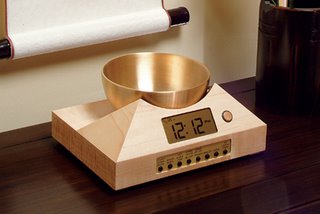 Bowl Gong Timer and Alarm Clock for a Gentle Wake UP Now & Zen’s Yoga Timer Store
1638 Pearl Street
Boulder, CO 80302
(800) 779-6383
Posted in intention, Meditation Timers, Meditation Tools, mindfulness practice, Walking Meditation, Well-being, Zen Timers
 create a sacred place to be mindful Is there a place in your home or yard where you can let go, relax, and renew your awareness of transcendent, loving oneness? It doesn’t take much to create such a place.
Your can create your healing retreat —a garden, a teahouse, a room—or you can claim one that already exists—a window seat, a rock by a stream. Your haven can be a balcony with potted plants and a wind chime, a hot tub surrounded by lavender, a bedroom where you have banished all distractions, or a comforter you roll up in like a cocoon. It needn’t even be a particular place; it can be an experience you recreate each time you need it, like a candlelight bubble bath with fresh flowers and Mozart.
There are no rules about how to create a personal haven, but consider incorporating some of these features (let your heart and your gut guide you):
• A gateway or marked entry to set it aside as sacred
• Privacy (freedom from interruptions and demands)
• A place to rest (a bed, hammock, comfortable stool)
• Calming colors
• Curved shapes
• Soft textures
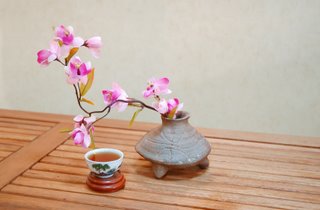 create a sacred space in your house • Plants
• Objects of beauty
• Simplicity, absence of clutter
• Soothing sounds (birdsong, moving water, music, wind chimes)
• Sunlight or soft, warm electric light
• Pleasing scents
• The four elements: air, earth (the ground, stones), water (in a bowl, fountain, or body of water), fire (sun, candles, a fire)
• A long vista, if there’s a pleasant one available
• Symbols of calm, transcendence, love, nourishment (hearts, stars, sun, moon, angels, personal treasures)
You deserve it
If you are like most people, the hardest part isn’t finding or creating a sanctuary; it’s believing that you deserve to spend time there. We tend to be so overwhelmed with demands that time taken away from meeting them feels like time wasted. We somehow learned that doing something just because it feels good is detrimental to others. Question these assumptions.
In fact, great inspiration, beautiful works of art, and profound love arise from the experience of unstructured time. In quiet, we can hear our muses and feel our passions. Here we can dream freely and drink from the deep well of our source. The peace we find carries into all our actions and relationships. What better gift can we give the world?
Although meditation can be done in almost any context, practitioners usually employ a quiet, tranquil space, a meditation cushion or bench, and some kind of timing device to time the meditation session. Ideally, the more these accoutrements can be integrated the better. Thus, it is conducive to a satisfying meditation practice to have a timer or clock that is tranquil and beautiful. Using a kitchen timer or beeper watch is less than ideal. And it was with these considerations in mind that we designed our digital Zen Alarm Clock and practice timer. This unique “Zen Clock” features a long-resonating acoustic chime that brings the meditation session to a gradual close, preserving the environment of stillness while also acting as an effective time signal.
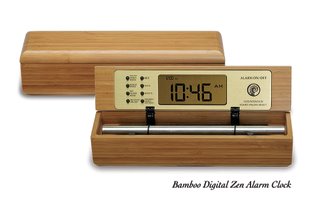 Bamboo Meditation Timers and Alarm Clocks
adapted from Natural Home Magazine, January/February2004 by Carol Venolia
 interiors that create well-being Now & Zen
1638 Pearl Street
Boulder, CO 80302
(800) 779-6383
Posted in Beauty, Chime Alarm Clocks, intention, Japanese Inspired Zen Clocks, Meditation Timers, Meditation Tools, mindfulness practice, Well-being, Zen Timers
« Previous Page — « Previous Entries
Next Entries » — Next Page »
|
|
|
|